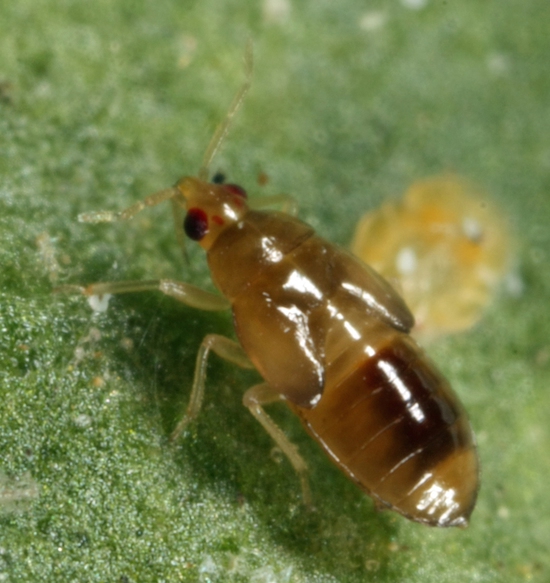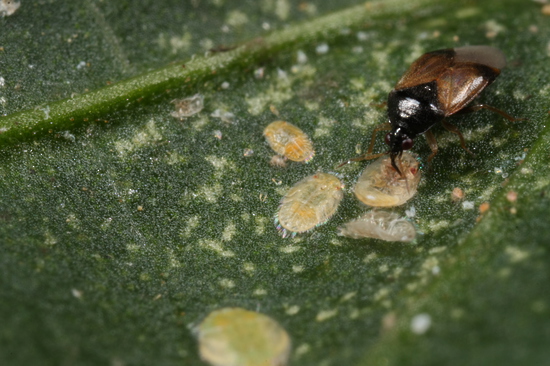Fighting Thrips the Natural Way 🌿
If you’ve ever noticed silvery patches on leaves, distorted flowers, or tiny little critters hiding inside blooms – chances are you’ve met thrips. These tiny sap-sucking insects might be small (less than 2 mm long!) but they can cause a lot of damage in the garden, especially when numbers get out of hand.
Here at RhodoDirect, we’ve been focusing on growing thrip-resilient rhododendrons, knowing that thrips can be a nuisance across all sorts of plants in the garden – from veggies to ornamentals. The good news is you don’t always need to reach straight for chemical sprays. Nature has its own pest control squad ready to step in.Meet the Predators 🐞🕷️
A number of beneficial insects and mites love snacking on thrips at different stages of their life cycle. By encouraging these natural helpers, you can keep thrip populations under control as part of an integrated pest management approach.

Close-up of Orius Lavae, ideal for illustrating natural pest control in organic gardening.
- Predatory Mites (Amblyseius cucumeris – sold as Mite-A™)
These little hunters target the youngest thrip nymphs – tackling the problem before it grows. - Pirate Bugs (Orius vicinus – sold as Orius™)
Tiny but mighty! They feed on all nymph stages of thrips and are great all-round predators for other pests too. - Soil Predatory Mites (Hypoaspis aculeifer – sold as Hyper-Mite™)
Thrips pupate in the soil, and these mites are right there waiting for them. - Beneficial Nematodes (sold as Nemaplus®)
These microscopic worms work below the surface, helping mop up thrips pupae hiding in the soil.
These natural predators are most effective when they’re introduced early – as soon as monitoring traps show signs of thrips – and when harsh pesticides aren’t being used, as sprays can kill off the “good guys” too.

Orius feeding on a Psllid nymph
Why Choose the Natural Route? 🌱
- Thrips are increasingly resistant to sprays, meaning chemical control can be hit and miss.
- Beneficial predators work with you long-term, helping create a balanced garden ecosystem.
- It’s safe for pollinators, your plants, and the wider environment.
Spotting Thrips in Your Garden 👀
Thrips are sneaky – they often hide in flowers or under leaves. Signs to look out for:
- Silvering or speckling on leaves
- Black dots (thrip droppings)
- Flowers that look deformed or patchy
- Tiny moving insects when you look closely
Sticky traps (blue ones are best for thrips) can also help you monitor whether they’re around.
If you’re curious about trying biological control in your own garden, our friends at BioForce Ltd supply a range of predator insects and mites. You can reach them at [email protected] for advice or visit their website to learn more.
Thrips might be tricky, but with the right mix of thrip-resilient plants and some natural garden allies, you’ll have the upper hand. 🌸
